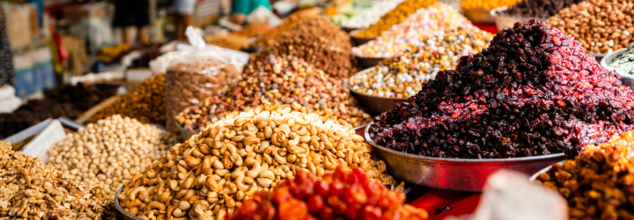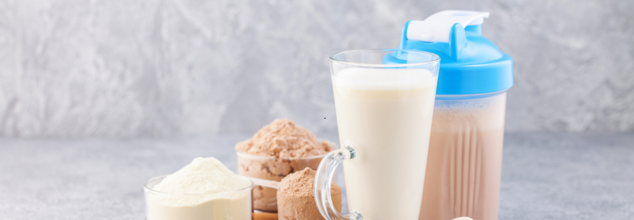- Health Conditions A-Z
- Health & Wellness
- Nutrition
- Fitness
- Health News
- Ayurveda
- Videos
- Medicine A-Z
- Parenting
- Web Stories

(Credit-Canva)
This Sweet Snack Could Help Support Heart Health, Lower Cholesterol And Curb Cravings
One of the biggest reasons of weight gain is unnecessary snacking and adding too many calories to your daily consumption. According to the Journal of Human Nutrition and Dietetics snacks on high in fat and sugar, can hinder weight management. This is where dry fruits and nuts come in to play an important role. If one feels like munching on something, dry fruits can be great low-calorie addition to your diet.
One such dry fruit is raisin. Although when you think of raisins, you might not think of protein, but they actually have a little bit! For a small snack, they give you a good boost of fiber too. According to a 2020 study published in the Nutrients, fiber helps you feel full, so you don't get hungry as quickly. Raisins are also full of antioxidants, which are like little helpers that keep your heart healthy. They can even help keep your teeth strong and might protect you from some serious illnesses. This also is a reason why they can help lower your "bad" cholesterol. So, raisins are a sweet treat that's also good for your body in many ways.
Ways Raisins Support Overall Health
Raisins have a special kind of fiber that helps lower the bad cholesterol in your blood. This is good for your heart! A 2008 study published in Lipids in Health and Diseases, have shown that eating raisins and walking regularly can make your heart even healthier. In the study, 34 men and women were divided into three groups: one group ate raisins, one group walked more, and one group did both. After a six-week period, everyone's systolic blood pressure went down. Total cholesterol and "bad" LDL cholesterol also decreased for everyone. The walking group saw a drop in triglycerides. The raisin group had lower levels of a marker for inflammation.
Everyone also had a reduction in sICAM-1, another inflammatory marker. Raisins also have potassium, which helps keep your blood pressure at a good level. A dietitian said that these nutrients are very important for keeping your heart healthy and preventing heart problems. Raisins are an easy snack to eat, so they're a simple way to get these heart-healthy nutrients. You can just grab a handful and eat them, or add them to your breakfast.
Even though raisins are healthy, you shouldn't eat too many because they have a lot of calories. It's important to eat them in moderation. Also, raisins shouldn't be the only source of fiber and potassium in your diet. You need to eat other healthy foods too. But they can be a great snack to add to your meals. To get enough potassium, you can eat other foods like potatoes, mushrooms, and bananas. And to get enough fiber, you can eat whole grains, beans, and peanut butter. It's important to eat a variety of healthy foods to keep your body strong and healthy. Raisins are a good part of a balanced diet.

Credit: Canva
White Pumpkin Juice-What Are Its Health Benefits And How To Make It?
White pumpkin or Ash Guard is a considerably rare vegetable which is packed with nutrients. It is rich in Vitamins A, B6, C, E and other important minerals. This makes it a perfect pick for those battling high cholesterol and heart issues. Research proves that it also acts as an antidepressant, promotes eye health, and is beneficial for people with asthma. They also help treat peptic ulcers, reduce inflammation, and have anti-ageing effects. All the aforementioned benefits are carried to its juice as well.
Here's What Is Special About Ash Guard Juice?
1. Rich in Nutrients
White pumpkin juice is a powerhouse of essential nutrients, including vitamins A and C, potassium, and iron. Vitamin A is crucial for maintaining healthy vision and supporting immune function, while vitamin C acts as a potent antioxidant, aiding in tissue repair and enhancing the immune system. Potassium helps regulate blood pressure and supports heart health, and iron is vital for oxygen transport in the blood. Incorporating white pumpkin juice into your diet can contribute to overall well-being by providing these essential nutrients. citeturn0search0
2. Powerful Antioxidants
White pumpkin juice is rich in beta-carotene, a powerful antioxidant that combats free radicals in the body. Free radicals can cause oxidative stress, leading to cellular damage and contributing to chronic diseases. By neutralising these harmful molecules, beta-carotene helps protect cells, supports overall health, and may reduce the risk of certain diseases. citeturn0search0
4. Radiant Skin
Packed with vitamins and antioxidants, white pumpkin juice promotes healthy and glowing skin. The nutrients help combat skin damage caused by environmental factors, reduce signs of ageing like wrinkles and fine lines, and improve overall skin texture and appearance. Regular intake can lead to a more youthful and radiant complexion. citeturn0search0
5. Boosts the Immune System
Rich in vitamin A, white pumpkin juice supports the immune system by enhancing the body's defense mechanisms against infections. Vitamin A also plays a role in maintaining healthy mucous membranes and skin, which serve as barriers to pathogens. Additionally, it supports vision and helps prevent eye diseases, including night blindness and age-related conditions. citeturn0search0
6. Organic Energy Enhancement
White pumpkin juice serves as a natural energy booster without the drawbacks of caffeine. Its nutrient-rich profile provides sustained energy levels throughout the day, making it an excellent choice for those seeking a refreshing and nutritious beverage to combat fatigue and enhance overall vitality. citeturn0search0
7. Reduces Inflammation
The anti-inflammatory properties of white pumpkin juice help in reducing inflammation in the body. Chronic inflammation is linked to various health issues, including arthritis and heart disease. By incorporating this juice into your diet, you may help alleviate inflammation-related symptoms and promote overall health.
How To Prepare A Refreshing Ash Guard Juice At Home?
To make white pumpkin juice, start by peeling and deseeding a fresh white pumpkin. Cut it into small cubes and rinse them thoroughly. Add the cubes to a blender with a little water to ease blending. Blend until smooth, then strain the mixture using a fine sieve or muslin cloth to remove pulp. For enhanced taste, you can add a pinch of black salt, a squeeze of lemon juice, or a few mint leaves before blending. Serve the juice chilled. It’s best consumed fresh to retain maximum nutrients and flavour. Avoid adding sugar to keep it healthy and natural.

Credits: Canva
How To Take Your Protein Powder The Right Way?
Protein shakes are always the most popular when it comes to fitness. It is used to boost your protein intake and also support your muscle building. Not only that, but the benefits extends to supporting your bone health and weight loss. It is not an unknown fact that protein is the building block of human body and is one of the important macronutrients that helps us with growth, along with supporting cells, organs and tissues.
The great thing is that now it is easily accessible as it can be consumed via shakes. But, how exactly must one consume it? Is there a right way to consume it?
So, What Is The Right Way To Consume Protein?
The million dollar question is, whether you should consume your protein powder with milk or water? The answer depends on your health goals and of course, taste preference.
If you are focusing on a low-calorie intake, you can go for a water based shake, since water has no calories.
However, if you want to add on a few calories in your drink, you can then go ahead with milk. Milk is also packed with carbs, fat, and protein. There is substantial data that also supports that a cup of milk contains around 150 calories, 11.3 grams of carbs, 7,81 grams of fat, and 7.98 grams of protein.
What Else Matters When You Choose A Base For Your Protein Shake?
The taste and texture of your protein shake often come down to personal preference. If you enjoy a creamier consistency, try blending your shake with plant-based milks like almond, coconut, or soy. These options add richness and subtle flavor. Water-based shakes, on the other hand, tend to be thinner and more neutral in taste.
For those who are lactose intolerant—a condition where the body has trouble digesting lactose, the natural sugar in dairy—using water or lactose-free milk is a gentler choice. Consuming regular milk can lead to uncomfortable symptoms like bloating, gas, and even severe diarrhea.
What Are The Benefits Of A Water Based Protein Shake?
- Water has zero calories, so it could be a great way to consume for weight loss
- Water-based protein shakes are convenient and can be enjoyed without worries about the drink going bad
- When water is mixed with proteins, it can help cut your carbs intake
What Are The Benefits Of A Milk Based Protein Shake?
- Adding a cup of milk to your shake boosts its protein content
- Milk contains both whey and casein proteins, which support muscle repair and growth
- It's also a good source of carbohydrates that help restore glycogen—your body’s energy reserve used during intense workouts
- Research suggests that consuming milk after exercise can enhance muscle growth, ease post-workout soreness, reduce muscle damage, and aid rehydration
- In short, milk helps build strength and supports overall recovery
Which One Gives The Best Results?
Experts say that whether you use milk or protein powder in your shake, both can help you reach your fitness goals. However, mixing protein powder with milk might be better for people who go to the gym or lift weights often.
Milk supports muscle growth and helps reduce soreness and muscle damage after workouts.
Protein powders like whey or pea protein offer similar benefits. So even if you choose water instead of milk, you’ll still get the advantages of using a good protein supplement.

Credit: Canva
Is Climate Change Affecting The Rice In Your Kitchen?
As climate change intensifies, researchers have predicted that arsenic in rice could increase and trigger a major public health crisis. Rice is a staple in many countries. In Asia, particularly in Japan and Korea, it is an important component in all meals. A rise in the arsenic, therefore, could seriously exacerbate deadly diseases, including cancer.
What is Arsenic?
Arsenic is a naturally occurring metallic element, widely distributed in the Earth's crust and found in various forms, like inorganic and organic. Research shows that it is toxic and does lead to severe health issues like cancers of the bladder, lung and skin, as well as several cardiovascular and neurological diseases.
Why is arsenic content in rice increasing?
Researchers from Colombia University, stated that an increase in temperatures above 2 degrees Celsius combined with rise in carbondioxide in the atmosphere can alter the soil chemistry, favouring arsenic, which gets more easily absorbed in rice grain. Contaminated soil and irrigated water while growing rice are known to increase inorganic arsenic in rice.
What Did Researchers Say?
The study was conducted by researchers from Columbia University and published in The Lancet Planetary Health. The study explained that an increase in temperatures above 2 degrees Celsius and rising levels of carbon dioxide could be causing changes in soil chemistry, favouring arsenic, which gets more easily absorbed into a rice grain. Contaminated soil and irrigated water from that area, while growing rice are known to increase inorganic arsenic in rice.
"Our results suggest that this increase in arsenic levels could significantly elevate the incidence of heart disease, diabetes, and other non-cancer health effects," said author Lewis Ziska, associate professor of environmental health sciences, Columbia University, said. "We found that temperature and CO2 act synergistically to increase arsenic concentrations in rice, compounding dietary arsenic exposures for rice consumers and leading to projected cancer cases in the tens of millions among populations of Asian countries in 2050," according to the study.
Are there any mitigation strategies?
There are ways to mitigate arsenic exposure. This includes breeding plants to minimise arsenic uptake and improved soil management in rice paddies, along with health initiatives. THE US FDA also recommends replacing cereals from rice with those with whole grains. Published studies, including research by the FDA, show that cooking rice similar to how pasta is cooked can reduce 40 to 60 per cent of the inorganic arsenic content, depending on the type of rice. However, this method of cooking rice in excess water—using 6 to 10 parts water to 1 part rice and then draining the excess water—also results in lowering the nutritional value of enriched polished and parboiled rice
© 2024 Bennett, Coleman & Company Limited

